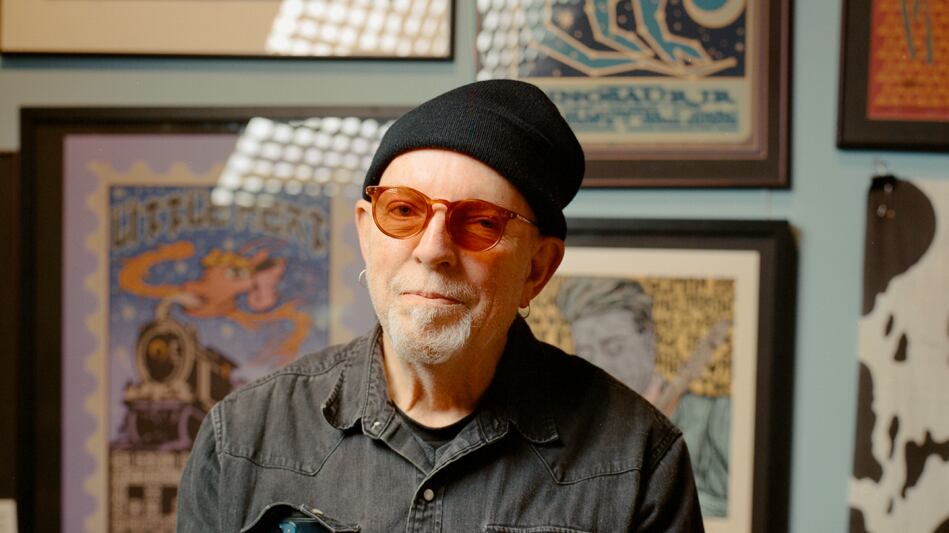Walking into Voodoo Catbox is like stepping into Geppetto’s studio. The floors are draped in rich, multicolored rugs; the bottom two-thirds of the walls are lined with shallow-drawered, wooden and metal filing cabinets. And all along the remaining free walls are concert posters chronicling the last several decades of owner Gary Houston’s prolific screen-printing career.
At the far end of the studio, under a slanted, skylit roof is a desk covered with illustrations and notes, black scratchboards and angled cutting knives. The words “old timey” come to mind. And Houston is down with that.
“Digital is all fine and well, but…who cares?” says Houston, whose handiwork will be available at his annual show and sale at Music Millennium on Dec. 10 and 11. Houston loves the fact that every step of the process is organic and touched by a human’s hand. He’s known for his intricate scratchboard artwork and hand-cut, screen-printed posters. Each piece is unique, and once a batch is sold out, that’s it.
Well known as the Waterfront Blues Festival poster guy, Houston has made concert posters for so many artists it’s hard to keep track. Yet he seems to have a mind like a steel trap. He starts listing off a few: Robert Plant, Willie Nelson, Eric Clapton, David Byrne, Pavement’s Stephen Malkmus…the list is many years long.
I point out a signed B.B. King poster. “That one is actually an R. Crumb,” he says, pointing to Crumb’s signature. Houston gets on a B.B. King tangent, which somehow leads to talking about how Ringo Starr moves like a dancer on the drums. “He’s left-handed, you know,” Houston says.
Houston lives and breathes music. “Sometimes I feel like a bottom feeder,” he confesses. He doesn’t want to make money off of what any musicians are doing, but artists like him are an important part of the music industry. “You want this to be in the things we do,” he says, patting his heart. “And, look, I’m never gonna be wealthy, but at the same time, I haven’t missed too many meals.”
Referring to himself jokingly, he adds, “Sure, there are days I want to fire myself. My boss is a jackass.”
We take a look at this year’s Waterfront Blues Festival poster, which features a blues guy sitting on a suitcase and plucking away on his guitar. In the background we see the familiar blues story creep in: the devil rolling in with, we assume, an offer for the musician’s soul.
Houston takes me to a multicolored cabinet and slides open a drawer, from which he selects each component of the original poster: the intricate drawing, each layer of screen for the printing process: magenta, ochre, blue. He explains how screen printing works and how he doesn’t decide what colors anything will be until he’s actually cutting the screens. Then he stops and points at the giant printer by his desk.
“I make it up as I go along, whereas if I printed it in a printer? We’d be going through film and ink like that,” he snaps his fingers. “And we’d be locked in. But with screen printing, I can make changes as I go. You go to every city and there are people that are doing the same thing. And the nice thing about that is that we’re all keeping screen printing alive.”
Houston continues guiding me through his screen printing and coloring process, pointing out all the drying racks. To take us full circle, he explains that his process is all about the rhythm and texturing.
“It’s like its own little puzzle,” he says. “And it all starts with a drawing.”
GO: Gary Houston’s annual show and sale will be held at Music Millennium, 3158 E Burnside St., 503-231-8926, musicmillennium.com. 10 am-6 pm Saturday-Sunday, Dec. 10-11.
